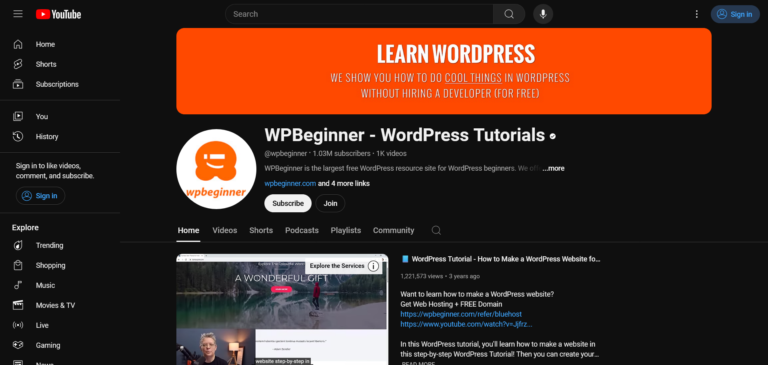Proven Strategies to Increase Website Traffic for Beginners
Key Take-aways
- Keyword Research: The foundation for targeting the right audience and driving traffic.
- Content Creation: Craft engaging, thorough, and keyword-optimized articles that captivate your audience.
- Online Networking: Leverage social media, Q&A sites, and communities to gain visibility and traffic.
- Email Lists: Build and nurture your audience for repeat traffic.
Congratulations! Setting up your website is a huge milestone. But, the journey doesn’t end there. One of the biggest challenges new website owners face is generating traffic. Don’t worry—I’m here to walk you through proven strategies that will set your website on the path to success. Whether you’re a beginner or looking to refine your skills, these steps will give you a competitive edge and help establish a steady stream of visitors.
1. Keyword Research: The Foundation of Traffic Generation
Keyword research is the bedrock of a successful digital marketing strategy. It involves finding the exact terms that potential visitors are using to search for products or information related to your niche. This research is crucial because it guides the direction of your content, ensuring that your articles match user intent and draw organic traffic. Begin with a simple brainstorm—list down every topic relevant to your business and then refine these ideas using professional tools.
Tools like Ahrefs and AnswerThePublic provide comprehensive insights, from search volume to keyword difficulty. For beginners, starting with a tool like Ahrefs (using their trial option) can be an efficient way to gather data on thousands of keywords. These tools allow you to evaluate competition and spot trending topics that may give your site a competitive edge. For a budget-friendly option, AnswerThePublic visualizes search queries, helping you identify the most common and emerging questions people are asking.
Refining your keywords based on search volume and difficulty is critical, especially if your site is new. By filtering for low-difficulty keywords (under a score of 30, for example), you can target opportunities that are easier to rank for, ensuring that your efforts yield tangible results quickly. This focus on manageable targets builds momentum, confidence, and a foundation upon which you can grow as your site gains authority.
- Brainstorm Keywords: List topics relevant to your business before refining with keyword tools.
- Use Professional Tools: Tools like Ahrefs and AnswerThePublic offer invaluable data and insights.
- Focus on Low Competition: Target keywords with lower difficulty scores to gain traction faster.
2. Creating Useful and Engaging Content
Once you’ve identified your keywords, the next step is to create content that delivers value. It’s not enough to write short, surface-level articles; your content must be in-depth, informative, and genuinely helpful. Start by crafting articles that are at least 1,000 words, with the goal of thoroughly addressing the topic. This length is more likely to satisfy search engine algorithms and, more importantly, the user’s needs. Remember, Google rewards content that offers a complete answer to a search query.
Content should also be formatted for maximum readability. This means breaking up your text with subheadings, bullet points, and visuals to avoid overwhelming the reader. Articles that are easy to skim tend to retain users longer and result in higher engagement metrics—both of which positively impact your SEO ranking. Aim to include infographics, images, and examples that illustrate your points clearly. Visual elements are not only engaging but also make complex ideas easier to understand.
Moreover, you should integrate keywords naturally throughout the content, ensuring that the article reads smoothly while still optimizing for search engines. Including related terms and variations helps Google understand the context of your page, increasing your chances of ranking for multiple queries. Quality content acts as a magnet, drawing in users while building your credibility and authority within your niche.
- Write In-Depth Content: Aim for at least 1,000-2,000 words, ensuring thorough coverage of topics.
- Use Visuals and Subheadings: Enhance readability by breaking up large chunks of text with engaging visuals.
- Integrate Keywords Naturally: Ensure that keywords are woven into the content in a natural and relevant manner.
3. Online Networking: Expanding Your Reach
Driving traffic isn’t solely dependent on content and SEO; it also requires proactive online networking. Think of this as digital relationship building. SEO takes time, so while you wait for your articles to rank, leverage online platforms like social media, forums, and Q&A sites to gain immediate visibility. Engage in Facebook groups, Reddit communities, or Quora discussions relevant to your industry. By contributing meaningful insights and value, you can build a reputation and naturally direct traffic to your site.
When engaging on social media, it’s crucial to focus on the platforms most beneficial for your niche. For local businesses, creating a Facebook page or Google My Business profile is essential to gaining visibility in your community. For visual-heavy industries, platforms like Pinterest and YouTube are powerful tools that double as search engines. Sharing your expertise through videos or visual content helps you reach audiences actively searching for your services.
Remember, it’s not about spamming links but rather building relationships and trust. Share your content strategically by offering genuine value, such as tips or solutions to common problems in your industry. This approach encourages organic engagement, and as people begin to recognize your authority, they are more likely to visit your site, share your content, and become loyal followers.
- Engage in Relevant Groups: Build relationships in online communities to establish trust and authority.
- Focus on the Right Platforms: Target platforms like YouTube, Pinterest, or local listings based on your industry needs.
- Provide Genuine Value: Offer insights and solutions without spamming links to gain organic engagement.
4. Building and Nurturing an Email List
Building an email list is a vital step in creating a sustainable traffic source. An email list allows you to stay in touch with your audience, consistently bringing them back to your website. Start by placing simple opt-in forms at strategic locations on your site—such as at the end of blog posts, in pop-ups, or on your homepage. Make sure to communicate the benefits subscribers will receive, like exclusive content or updates on new articles.
As your audience grows, consider offering a lead magnet—a valuable free resource like an e-book, checklist, or guide that encourages sign-ups. This incentive not only boosts your email list growth but also strengthens your connection with your audience by providing immediate value. Make sure the lead magnet is relevant to your audience’s needs and directly tied to your core offerings, so the subscribers gained are genuinely interested in your content.
Finally, nurture your email list by sending regular updates, newsletters, and exclusive content. Regular engagement keeps your audience connected and encourages repeat visits to your site. An email list is more than a tool for traffic—it’s a way to build a community around your brand, ensuring a loyal following and consistent website growth.
- Place Opt-In Forms Strategically: Use forms on your site to capture leads effectively.
- Offer Valuable Lead Magnets: Provide free resources that resonate with your audience’s needs.
- Engage Regularly: Send newsletters and updates to keep subscribers connected and engaged.
By applying these proven strategies, you can effectively increase your website traffic and build a loyal audience. From keyword research to networking and building an email list, every step is crucial. Don’t wait—start implementing these tactics today and watch your website traffic grow exponentially!

